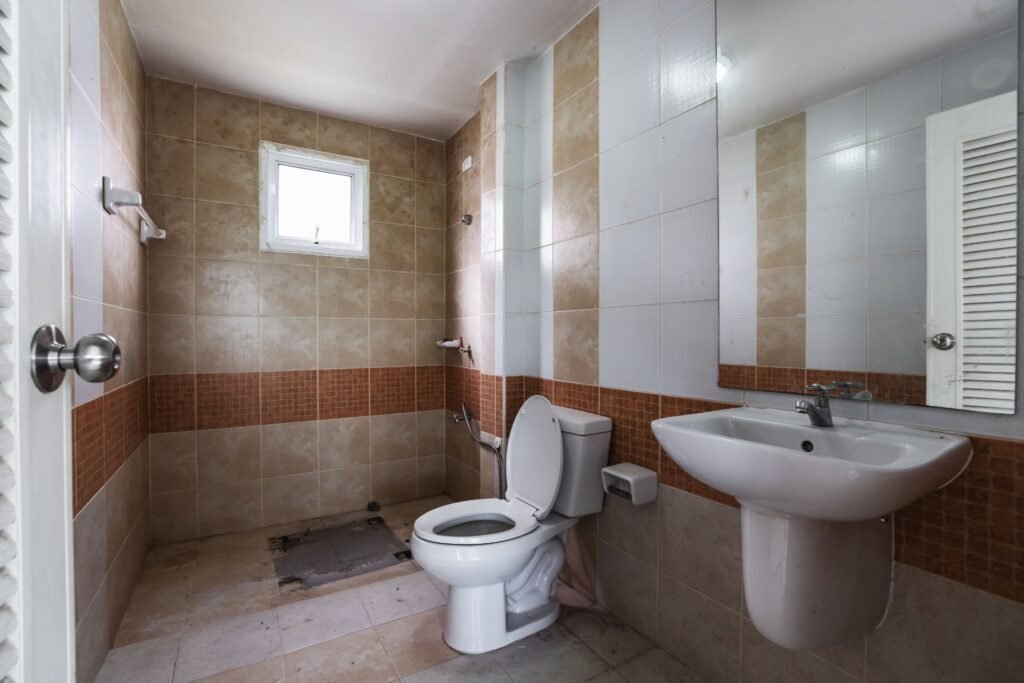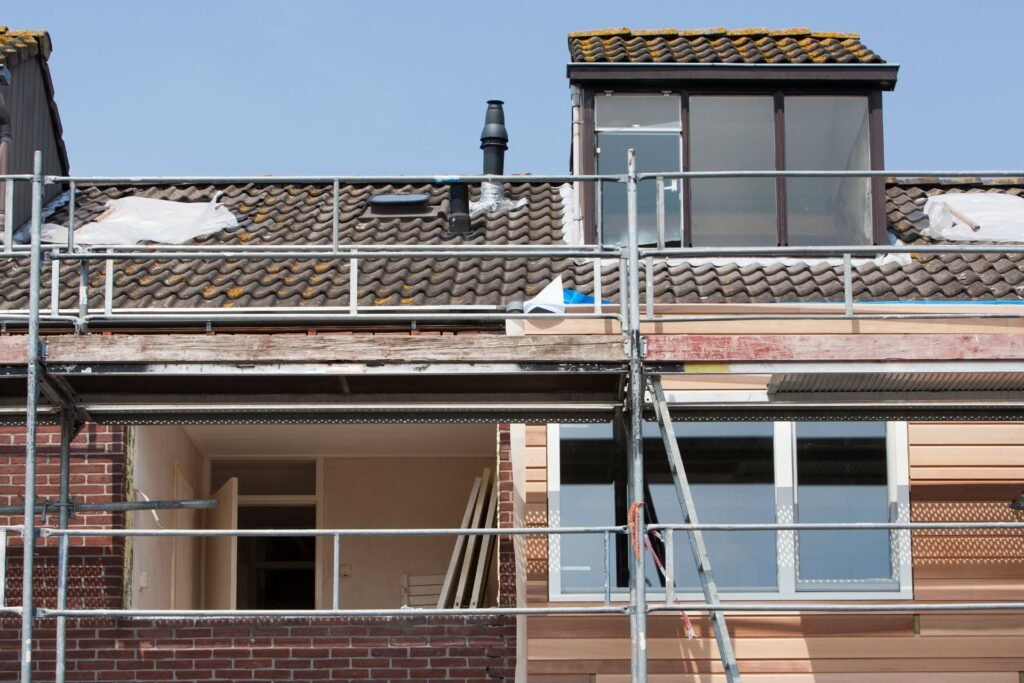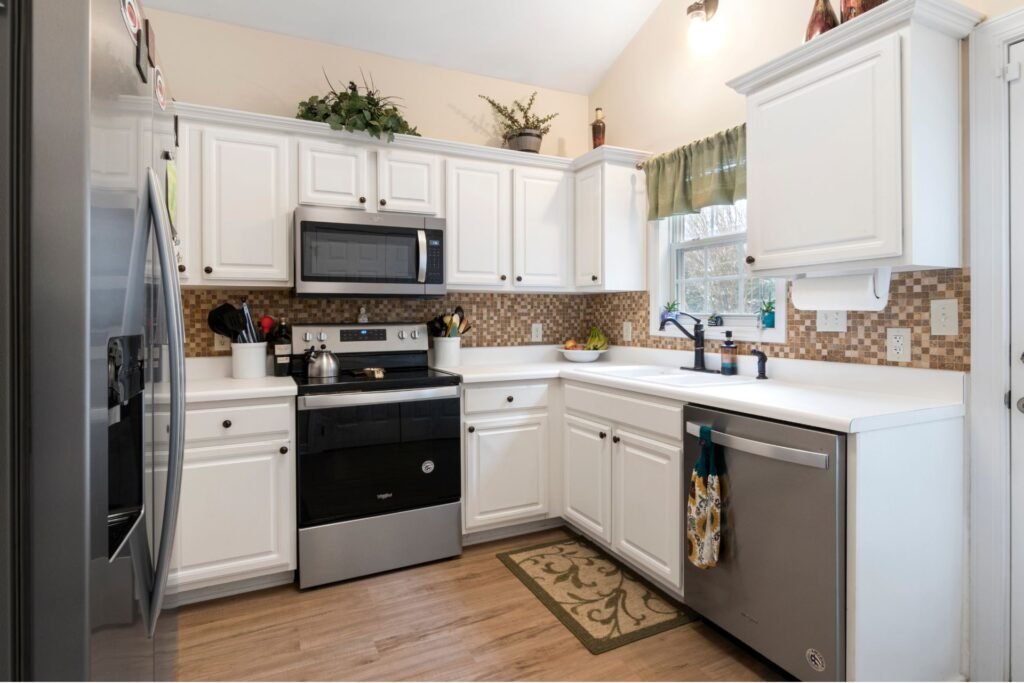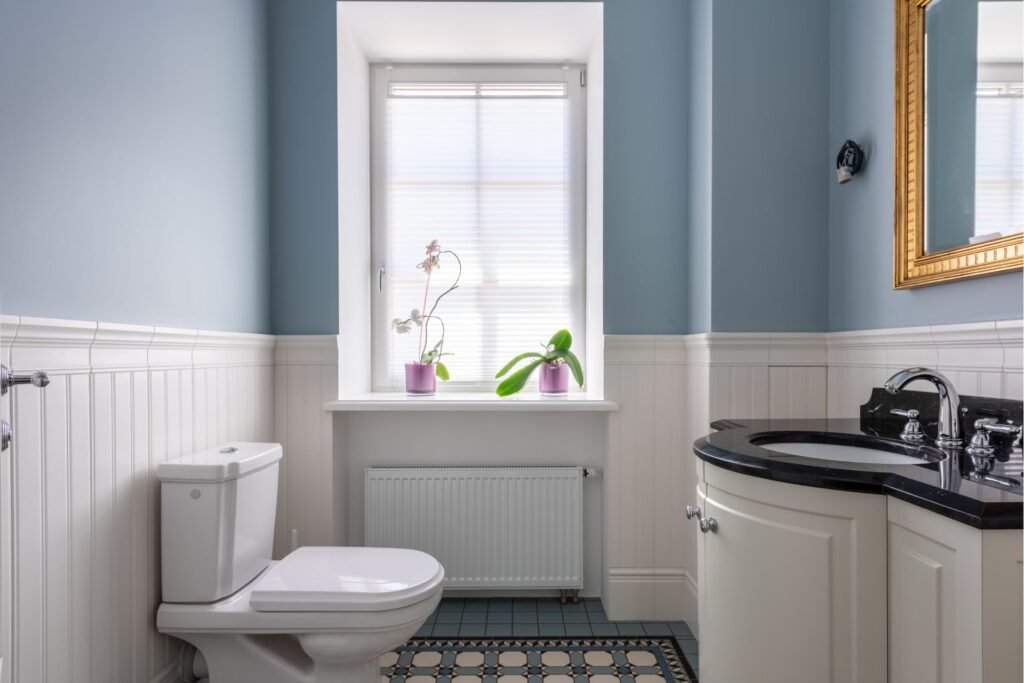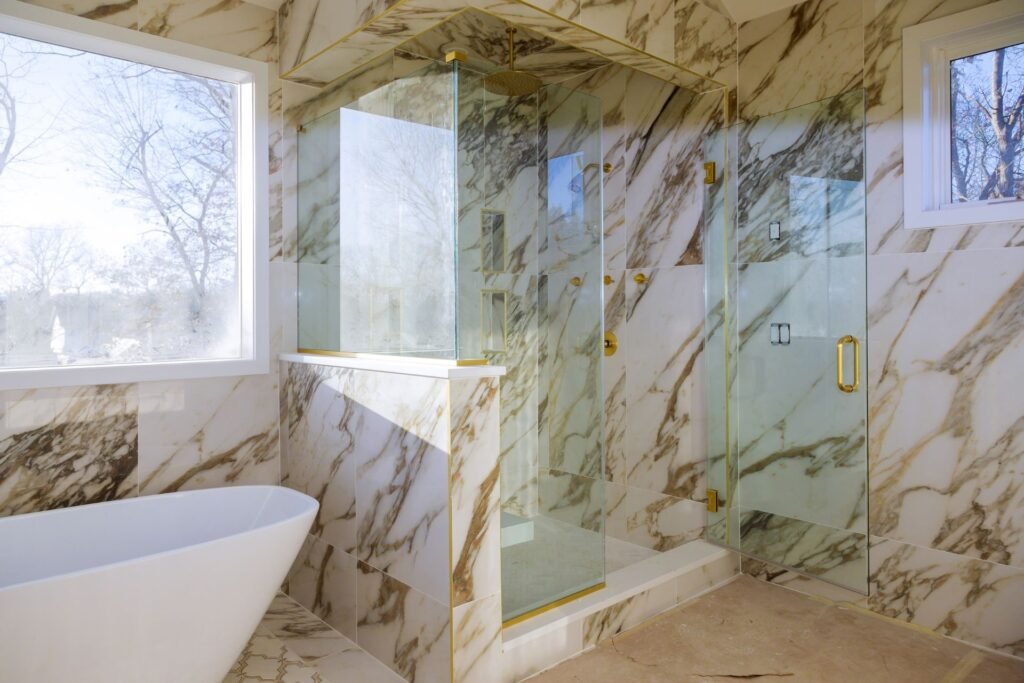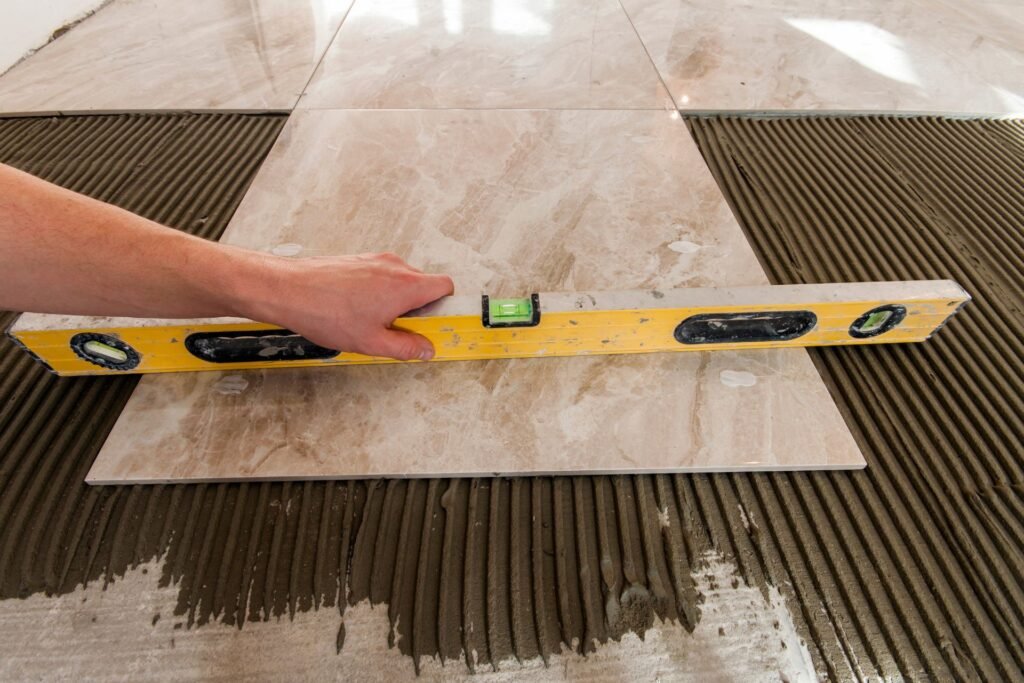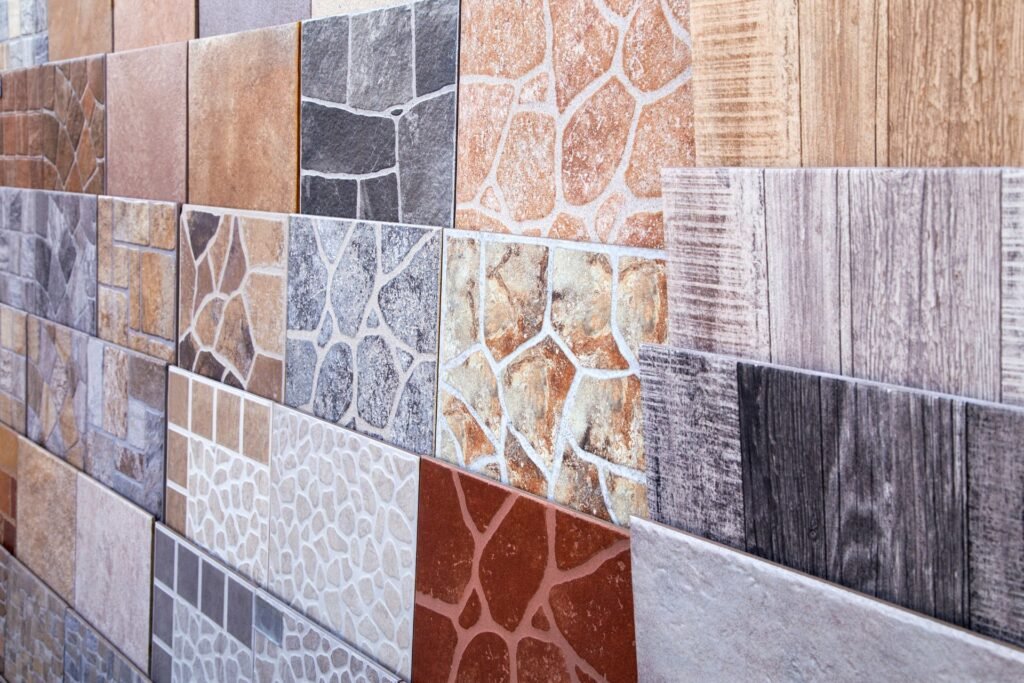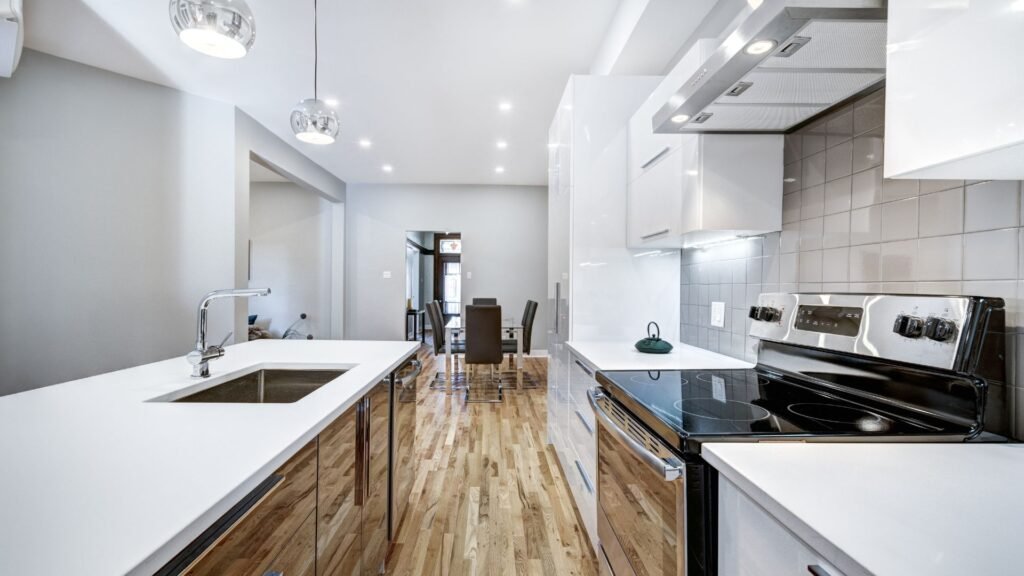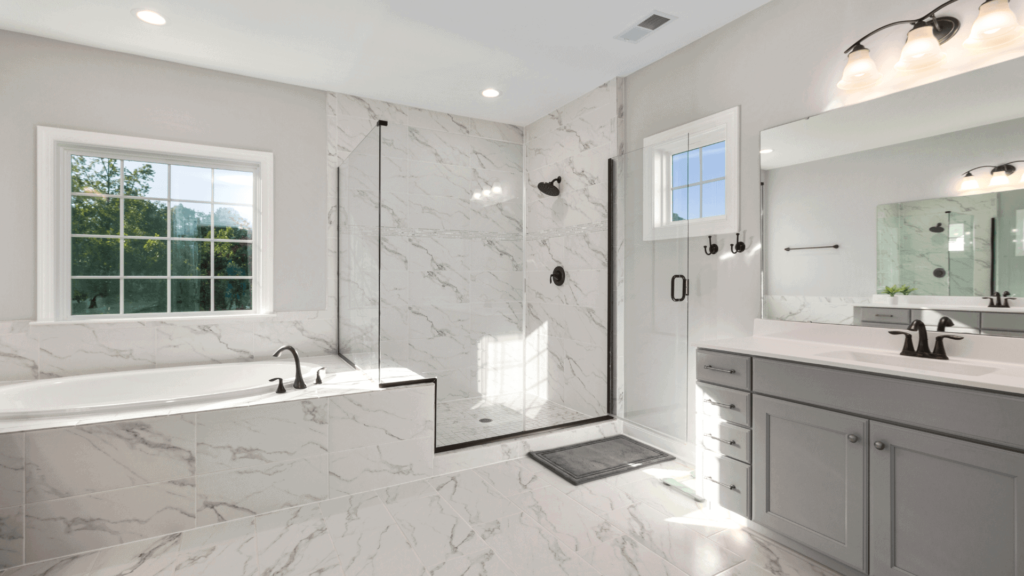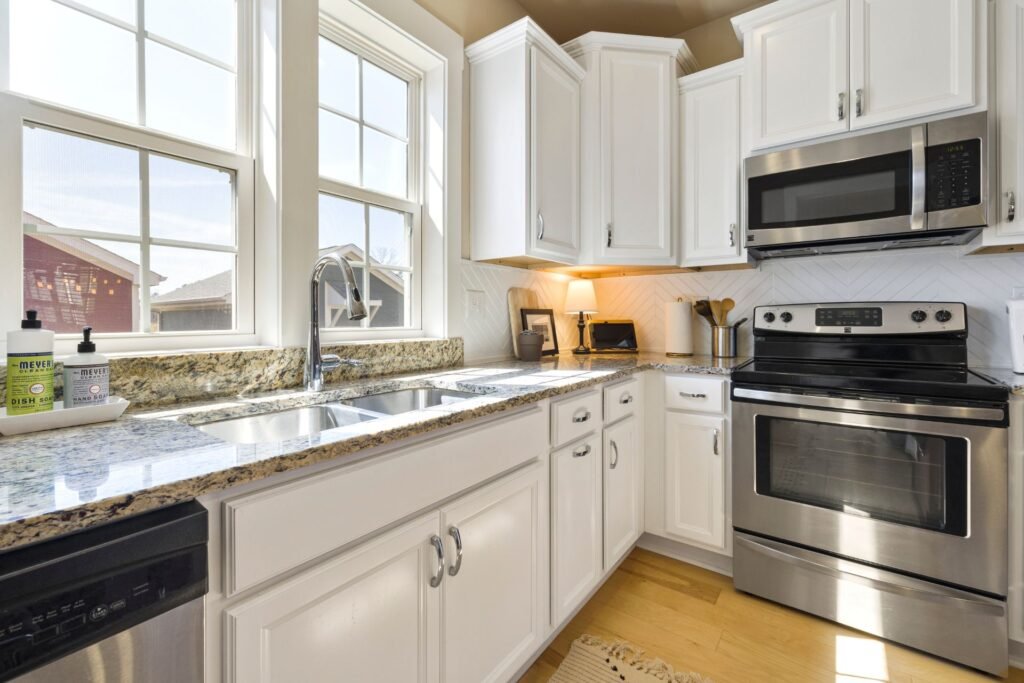Welcome to your ultimate guide on the bathroom renovation process in New Zealand! Whether you’re looking to upgrade an outdated space, add value to your home, or simply create a more functional and stylish bathroom, embarking on a renovation journey can feel overwhelming. In this guide, we’ll walk you through everything you need to know from planning and budgeting to design, permits, and the final finishing touches all tailored to the unique considerations of NZ homeowners. By the end, you’ll feel equipped and inspired to tackle your bathroom transformation with confidence and clarity. Let’s get started.
The bathroom renovation process in NZ involves several key steps: start by assessing your needs and gathering inspiration, followed by setting a realistic budget that accounts for materials, labor, and permits. Next, finalize your design, ensuring it fits both your aesthetic and functional goals. You’ll need to secure any necessary building consent for plumbing or structural changes. The renovation process itself includes demolition, plumbing, and electrical work, installing new walls and flooring, and fitting fixtures. Finally, add finishing touches and complete a final inspection to ensure everything meets NZ compliance standards.
- Initial Planning And Inspiration
- Setting A Realistic Budget
- Designing Your Dream Bathroom
- Securing Permits And Meeting NZ Regulations
- The Renovation Process – Step by Step
- Common Challenges And How To Overcome Them
- Final Walkthrough And Revealing The Finished Bathroom
- FAQs: About The Bathroom Renovation Process NZ
- Conclusion
Initial Planning And Inspiration
When it comes to renovating your bathroom, the first and most important step is to lay out a solid plan. Whether you’re aiming for a complete makeover or simply updating specific features, taking the time to assess your needs and gather inspiration will ensure that the renovation process goes smoothly. This guide will walk you through how to plan a successful bathroom renovation from the ground up, focusing on what matters most to you.
Assessing Your Needs
Before diving into the design process, it’s crucial to ask yourself, “What is motivating this renovation?” This step requires a deep look into your specific reasons for upgrading your bathroom. Are you looking to update a tired, outdated space? Or is there a functional need, such as plumbing issues or poor layout that’s driving the decision? For many, a bathroom renovation is about enhancing the overall aesthetic appeal, while for others, it might be about fixing essential elements like storage, lighting, or usability.
Understanding whether your priorities lean more toward functionality or aesthetics is key. For example, if you have plumbing issues or outdated fixtures, these practical needs should be addressed first. On the other hand, if your bathroom feels drab or uninspired, your focus might be more on choosing a fresh design. You may even want to achieve a luxurious spa-like atmosphere that enhances your home’s value and gives you a place to unwind after a long day. By identifying these motivations early on, you’ll have a clear direction when making decisions throughout the renovation process.
Gathering Inspiration
Once you’ve identified what’s driving your renovation, it’s time to find inspiration. This is where you get to dream big and explore different styles that resonate with your vision. From platforms like Pinterest and Instagram to design magazines, there are endless sources of inspiration to help you visualize the ideal space.
In New Zealand, several design trends have gained popularity in recent years. One such trend is the minimalist style, which emphasizes clean lines, simple colors, and functional design. This approach works well in small spaces, creating an open and airy feel. Natural textures are also a common theme in NZ bathrooms, with materials like wood, stone, and concrete adding an organic touch to the space. Additionally, many homeowners are leaning toward modern Kiwi designs, which blend contemporary aesthetics with traditional influences. By researching these trends, you can discover what styles you’re most drawn to and how they can be adapted to your specific space.
Defining Your Goals
Now that you’ve assessed your needs and gathered inspiration, it’s time to define your specific renovation goals. Ask yourself what practical elements you need in your bathroom. Do you need more storage to declutter the space, or is your priority better lighting to create a brighter, more welcoming atmosphere? Perhaps you’re looking to rework the layout to make the room more functional or even expand it for added comfort.
It’s important to balance your design desires with practical needs. While it’s tempting to focus solely on creating a beautiful bathroom, functionality is key to ensuring long-term satisfaction with your renovation. Whether it’s installing double sinks for a growing family, upgrading to water-efficient fixtures, or creating a luxurious shower area, make sure every element of your design serves a purpose. Combining practical upgrades with a style that reflects your personality will result in a bathroom that’s both beautiful and functional.
By taking the time to thoroughly plan your renovation, you’ll be better prepared to move forward with confidence, knowing you’ve considered all aspects of the process. This step is crucial to ensuring that your bathroom transformation not only meets your needs but also becomes a space that you’ll love for years to come.

Setting A Realistic Budget
Understanding the Costs in New Zealand
When planning a bathroom renovation in New Zealand, understanding the potential costs involved is crucial to avoid financial surprises down the road. Renovation costs can vary greatly depending on the scope of the project, so whether you’re doing a basic update or a full-scale remodel, it’s important to have a clear picture of what you might spend.
- Basic Bathroom Update: If you’re just looking to refresh the look of your bathroom, you might focus on minor updates such as changing the fixtures, painting, and replacing tiles. In New Zealand, a basic renovation typically ranges from $10,000 to $15,000, depending on the quality of materials chosen.
- Full Bathroom Renovation: For those planning to completely redesign or overhaul their bathroom, the costs can be significantly higher. A full renovation, which includes plumbing, new flooring, cabinetry, and updated fixtures, could range anywhere from $20,000 to $30,000 or more. High-end materials and luxury fittings can drive this number higher, potentially exceeding $40,000 for premium projects.
A typical bathroom renovation in NZ usually involves costs for materials, labor, permits, and possibly additional fees for specialized work. Here’s a basic breakdown of expenses:
- Materials: This can include everything from tiles, vanity units, and tapware to showerheads and bathtubs. Material costs vary widely depending on quality and brand, with tiles, for example, ranging from $30 to $150 per square meter.
- Labor: Professional labor costs make up a large portion of the budget. Tradespeople such as plumbers, electricians, tilers, and carpenters generally charge hourly rates.
- Permits and Regulations: Depending on the scale of your renovation, you may need permits, especially for electrical and plumbing work. The cost of obtaining these permits can vary by location but typically ranges from $300 to $1,500.
Budget Planning Tips
Planning your budget effectively is key to ensuring your bathroom renovation project stays within financial limits while meeting your vision. Here are some tips to help you get started:
- Set a Contingency Budget: Unexpected costs are a common occurrence in renovation projects, especially when dealing with older homes that might have underlying issues such as faulty plumbing or hidden water damage. It’s wise to allocate an additional 10-15% of your total budget to cover any unexpected expenses. Having this cushion will help you avoid financial stress should any surprises arise.
- Where to Splurge and Where to Save: Prioritizing your spending can help you stay on budget without compromising on quality. For example, splurging on premium fixtures like a high-quality showerhead or vanity can enhance both the functionality and aesthetic of your bathroom, making it a worthwhile investment. However, you can save on items like tiles or cabinetry by choosing affordable yet stylish alternatives. Consider opting for durable, mid-range materials for areas that receive the most use, while using budget-friendly options in less prominent spots.
Hiring Professionals vs. DIY
One of the major decisions you’ll face during your bathroom renovation is whether to hire professionals or take the DIY route. While doing certain parts of the renovation yourself can save you money, it’s important to carefully weigh the pros and cons before making a decision.
Hiring Professionals
- Pros: Professional tradespeople such as plumbers, electricians, and designers bring expertise and experience to the table, ensuring that the work is done to a high standard. They are also familiar with building codes and can help you navigate any necessary permits. This reduces the risk of costly mistakes or the need for repairs down the road. Additionally, hiring professionals saves time and reduces stress, as they manage the project from start to finish.
- Cons: The primary downside to hiring professionals is the cost. Skilled tradespeople in New Zealand often charge higher hourly rates, which can quickly add up. For instance, a qualified plumber may charge between $85 and $120 per hour, while electricians can charge anywhere from $90 to $150 per hour, depending on the complexity of the job.
DIY
- Pros: DIY renovations allow you to save on labor costs and give you full control over the project. If you have the necessary skills and knowledge, you can complete tasks such as painting, tiling, or even installing cabinetry yourself, reducing your total renovation cost.
- Cons: The downside of DIY is the risk of mistakes, which can be expensive to fix later on. Plumbing and electrical work, in particular, require professional expertise to ensure safety and compliance with local regulations. Attempting these tasks without proper knowledge could lead to issues that may not only void your insurance but also cost more in repairs.
When deciding which route to take, consider the complexity of the renovation, your skill level, and the time you’re willing to invest in the project. While doing some parts yourself can save money, hiring professionals for critical areas like plumbing and electrical work is often the best way to ensure the job is done right the first time.
By carefully planning your budget, understanding the costs involved, and making informed decisions about where to spend and save, you’ll be better prepared to manage your bathroom renovation in New Zealand successfully.

Designing Your Dream Bathroom
Designing your dream bathroom is an exciting yet potentially challenging endeavor. Whether you’re starting with a blank slate or renovating an existing space, it’s essential to balance aesthetics, functionality, and budget. Below, we delve into the key aspects to consider while designing a bathroom, including whether to work with a designer, how to choose the perfect layout and fixtures, and selecting the best materials and finishes to achieve the bathroom of your dreams.
Working with a Designer (Or Going Solo)
One of the first decisions you’ll need to make is whether to work with a professional designer or tackle the design on your own. There are advantages to both approaches, but understanding your project’s complexity will help guide this decision.
Benefits of Working with a Bathroom Designer
Collaborating with a bathroom designer can be invaluable, particularly for complex renovations or high-end builds. A designer brings years of experience and knowledge of trends, materials, and solutions that you might overlook. They can create a functional layout, source quality materials, and help manage your budget efficiently. Designers are also skilled in maximizing space, which is crucial for smaller or uniquely shaped bathrooms, often common in New Zealand homes.
Working with a designer can save you time, reduce stress, and potentially avoid costly mistakes. They can coordinate with contractors, manage timelines, and ensure that the entire process runs smoothly from start to finish.
Designing on Your Own: Tips for Success
If you prefer the hands-on approach or are working with a tighter budget, designing your own bathroom is completely feasible. There are plenty of online tools available that can help you visualize your space, plan layouts, and choose color schemes. Free design software and apps are great for DIY projects, allowing you to experiment with different layouts and materials virtually.
Additionally, consulting local experts or visiting showrooms can provide valuable insights. Many stores in New Zealand offer free consultations or design advice, giving you the guidance you need without the expense of hiring a designer.
Choosing Layout and Fixtures
The layout of your bathroom is one of the most critical aspects of the design process. A well-thought-out layout will maximize space, enhance functionality, and ensure your bathroom is both beautiful and practical.
Optimizing Space in Smaller NZ Bathrooms
Space is often limited in New Zealand homes, especially in older properties or urban areas. To make the most of a smaller bathroom, it’s essential to choose a layout that maximizes floor space while ensuring easy movement. Wall-mounted vanities, corner sinks, and compact fixtures can help open up the room and make it feel more spacious. Sliding doors or open showers (with no door or curtain) are also excellent options for space-saving designs.
Popular Fixture Choices in NZ
When selecting fixtures, consider the needs of your household and the specific style you want to achieve. Showers are often favored in New Zealand bathrooms, particularly in smaller homes, as they are more space-efficient. However, bathtubs are still popular in larger bathrooms or for families with children.
Vanity units are also an essential feature in any bathroom, providing both storage and style. Floating vanities or those with built-in drawers are popular choices for maximizing storage in a smaller space. For a more modern, sleek look, many homeowners are choosing minimalistic designs with clean lines.
Eco-friendly fixtures are becoming increasingly popular in New Zealand, reflecting the country’s focus on sustainability. Water-saving showerheads, dual-flush toilets, and energy-efficient lighting options are fantastic choices for creating an environmentally conscious bathroom.
Materials and Finishes
The materials and finishes you choose can dramatically impact the look and feel of your bathroom. Durability is key, as bathrooms are high-moisture environments, but that doesn’t mean you have to sacrifice style. With a wide range of options available, you can find materials that are both beautiful and functional.
Tiles, Countertops, and Flooring
Tiles are a staple in bathroom design due to their water resistance, durability, and variety of styles. Whether you prefer classic subway tiles, vibrant mosaics, or large-format tiles, there are endless options to suit any design aesthetic. Natural stone tiles, such as marble or travertine, are luxurious choices, while ceramic and porcelain tiles offer more affordable alternatives.
For countertops, quartz and granite are popular choices, offering both elegance and durability. These materials are easy to maintain and come in a variety of colors and patterns to match your design. For a more modern or industrial look, concrete countertops are also gaining popularity.
When it comes to flooring, it’s essential to choose a material that can withstand water and humidity. Porcelain tiles are a favorite for bathroom floors due to their durability and water resistance. If you prefer a warmer look, waterproof wood or wood-look tiles are excellent alternatives that bring a natural feel into the bathroom.
Trends in Bathroom Materials
Natural stone and wood finishes are among the top trends in bathroom design, bringing an organic, earthy feel to the space. Waterproof wood, for example, is ideal for creating a spa-like atmosphere without worrying about moisture damage. Eco-friendly materials are also trending, with many homeowners opting for recycled glass tiles, bamboo countertops, or reclaimed wood vanities to reduce their environmental impact.
Another growing trend in New Zealand is the use of matte finishes, particularly in black or darker tones, for taps, fixtures, and even tiles. These finishes add a touch of sophistication and contrast beautifully with lighter materials, creating a striking, modern look.
By considering these key aspects, you can design a bathroom that perfectly aligns with your lifestyle, space, and taste. Whether you work with a professional designer or take on the project yourself, the ultimate goal is to create a bathroom that is both functional and aesthetically pleasing, ensuring it serves as a relaxing retreat in your home.

Securing Permits And Meeting NZ Regulations
Renovating a bathroom in New Zealand can be an exciting project, but it comes with its fair share of rules and regulations. Before diving in, it’s important to understand the legal requirements surrounding building consents and the need for licensed professionals to ensure your renovation is not only safe but also compliant with local laws. This section outlines everything you need to know about securing permits and meeting NZ’s regulations for bathroom renovations.
Building Consent Requirements
One of the first steps in any renovation is determining whether or not you need building consent. In New Zealand, the building consent process ensures that any structural work or significant modifications meet the Building Code, which guarantees safety and durability.
Do You Need Building Consent?
Not all bathroom renovations require building consent, but many do, especially if you’re making significant changes. If you’re simply updating tiles, repainting, or replacing existing fixtures without altering the plumbing or structure, then you’re likely in the clear. However, if you plan on making modifications to the plumbing system or changing the layout of your bathroom, building consent is typically required.
According to New Zealand law, building consent is necessary for any work that involves:
- Plumbing changes: If you’re altering or extending plumbing, you will need consent. This includes relocating fixtures like sinks, toilets, and showers.
- Structural changes: If you’re knocking down walls, moving doors, or making other structural alterations, building consent is mandatory.
- Waterproofing: Bathrooms require proper waterproofing to prevent future issues like leaks or mold. If your renovation involves changing waterproofing systems, consent may be needed.
- Drainage systems: Any work involving the drainage system also typically requires approval from local authorities.
It’s important to check with your local council or visit their website to confirm whether your project requires consent. Failing to obtain the necessary consent can result in fines, costly fixes, and future difficulties when selling your property.
Types of Renovations That Require Permits
Here’s a quick breakdown of common bathroom renovation projects and their consent requirements:
- Moving plumbing or electrical work: Both plumbing and electrical modifications usually require professional involvement and, often, council approval.
- Installing a new bathroom: If you’re adding a bathroom to a previously unused space, such as a basement or garage, building consent is required.
- Alterations that affect the building’s structure: Any work that could affect the structural integrity of your home, such as moving or removing walls, will need approval.
Working with Licensed Builders and Tradespeople
One of the most critical aspects of a successful renovation in New Zealand is ensuring that you’re working with licensed and qualified professionals. Hiring licensed builders, plumbers, and electricians is not only required for specific types of work but also ensures that the work is completed to a high standard and meets all NZ Building Code requirements.
Importance of Using Licensed Professionals
In New Zealand, certain tasks, such as plumbing, gas fitting, and electrical work, are considered restricted building work (RBW). This means that only licensed professionals are legally allowed to perform these tasks. Working with licensed tradespeople ensures your renovation is safe, up to standard, and fully compliant with NZ regulations.
There are several key reasons to hire licensed professionals for your bathroom renovation:
- Compliance with NZ standards: Licensed professionals are trained to ensure your renovation complies with all relevant building codes and regulations.
- Insurance: If any problems arise after the renovation, your insurance provider may only cover issues that were handled by licensed tradespeople.
- Future resale value: If you plan to sell your home in the future, potential buyers and their inspectors will look for evidence that your renovation was completed by licensed professionals.
- Guarantee of quality: Licensed builders and tradespeople are held to high standards, giving you peace of mind that your bathroom will be safe and long-lasting.
Finding Licensed Builders and Plumbers in New Zealand
Finding reputable, licensed professionals for your renovation is easy with the right resources. The Licensed Building Practitioners (LBP) website is an excellent place to start when searching for a licensed builder. It allows you to verify whether a professional is licensed and provides details about their qualifications.
Similarly, for plumbers and electricians, the Plumbers, Gasfitters, and Drainlayers Board (PGDB) and Electrical Workers Registration Board (EWRB) are great resources for finding registered professionals in your area. These platforms ensure you’re hiring tradespeople with the proper training and licenses to carry out the work in compliance with New Zealand laws.
By choosing licensed builders and tradespeople, you’ll avoid potential pitfalls and ensure your bathroom renovation is both high quality and up to code.
Securing the necessary permits and working with licensed professionals is essential for any successful bathroom renovation in New Zealand. Not only does it ensure your project meets the legal requirements, but it also guarantees that the renovation will stand the test of time, providing you with a safe, functional, and stylish bathroom.
Always check with your local council for specific building consent requirements and use resources like the LBP, PGDB, and EWRB websites to find qualified professionals. Following these steps will save you time, money, and stress, allowing you to enjoy your newly renovated bathroom without any legal or structural concerns down the line.

The Renovation Process – Step by Step
Renovating your home can be an exciting yet overwhelming experience. To help make the journey smoother, here’s a detailed breakdown of the renovation process from start to finish. By understanding each step, you’ll be better prepared to navigate any challenges, ensuring a successful and well-executed renovation.
Demolition and Prep Work
The first step in any renovation project is demolition and preparation. This stage sets the foundation for everything that follows, so it’s critical to be well-prepared for the inevitable dust, noise, and disruption.
What to Expect During Demolition
Expect your space to transform into a construction zone during this phase. Workers will strip out old fixtures, remove outdated materials, and create the bare bones needed for your new design. Depending on the extent of your renovation, walls may come down, floors may be removed, and ceilings might be altered.
Precautions to Take
Dust and debris will be your main concerns during demolition. Protect your belongings by sealing off areas with plastic sheeting and covering furniture. You may also want to set up temporary living arrangements, especially if the work will disrupt essential spaces like bathrooms or kitchens. Prepare yourself for noise heavy machinery and hammering can make your home feel like a construction site.
It’s crucial to work with professionals who take safety seriously and ensure that structural elements like walls or beams are demolished correctly to prevent future issues.
Plumbing and Electrical Work
Once demolition is complete, plumbing and electrical work begin. These are critical aspects of your renovation, particularly in areas like bathrooms, kitchens, and laundry rooms, where efficient plumbing and up-to-code electrical systems are essential.
Upgrading Plumbing and Electrical Fixtures
During this phase, old plumbing fixtures are upgraded, and electrical points may be moved or added to accommodate new appliances, lighting, or outlets. This is the perfect time to install energy-efficient solutions, like water-saving fixtures or smart lighting systems, which can significantly reduce your utility bills in the long run.
Compliance with NZ Building Codes
New Zealand has strict building codes, especially when it comes to plumbing and electrical work. Ensuring compliance with these standards is not only a legal requirement but also essential for your safety. Hiring a licensed contractor who understands NZ’s building regulations will protect you from potential fines and safety hazards.
Installing Walls, Flooring, and Tiles
With the infrastructure in place, it’s time to focus on rebuilding the visual elements of your space, starting with walls, flooring, and tiles.
Re-Sheeting Walls and Waterproofing
Re-sheeting involves installing new wallboards, often made from materials like plasterboard or cement board. In spaces like bathrooms and kitchens, waterproofing is crucial. Proper waterproofing prevents moisture from seeping into the walls or floor, which can lead to mold growth or structural damage.
Choosing NZ-Appropriate Waterproofing Solutions
New Zealand’s wet, humid climate presents unique challenges, making waterproofing all the more important. Consider waterproofing systems designed specifically for high-moisture environments. Products like waterproof membranes and sealants provide extra protection in wet areas such as showers and around sinks.
Laying Tiles
Tiles are a popular choice for floors and walls in bathrooms and kitchens. They are durable, moisture-resistant, and come in a wide range of designs. When choosing tiles, think about functionality as well as aesthetics. Non-slip tiles are ideal for wet areas, and larger tiles can create a sense of space in smaller rooms.
Fixtures and Finishing Touches
Once your floors and walls are complete, it’s time to install the finishing touches that make your renovation truly shine.
Installing Vanities, Showers, Tubs, and Fittings
This stage is where the functional elements like vanities, showers, bathtubs, and other fixtures are installed. It’s important to consider both form and function here. For instance, a vanity should offer enough storage while matching your overall design. Similarly, a well-placed showerhead or bathtub can make a huge difference in comfort and usability.
Finishing Touches that Elevate the Design
The final step involves adding those subtle yet impactful touches mirrors, lighting, and accessories. These elements tie everything together and can transform an ordinary renovation into a luxurious, personalized space. Think about installing feature lighting to highlight key areas or choosing mirrors with built-in LED lighting for a modern touch. Accessories like towel racks, faucets, and soap dispensers may seem minor, but when coordinated properly, they create a cohesive and stylish design.
Understanding the renovation process step-by-step can help reduce stress and ensure a successful outcome. By preparing for each stage, working with licensed professionals, and making thoughtful design choices, you’ll be well on your way to creating a beautiful, functional space tailored to your needs.

Common Challenges And How To Overcome Them
Home renovation is an exciting journey, but it doesn’t come without its fair share of challenges. In this section, we’ll explore some common hurdles New Zealand homeowners often face during renovations and offer practical solutions to overcome them. From unexpected costs and tight spaces to managing stress, we’ve got you covered with tips to keep your project on track and as stress-free as possible.
Unexpected Costs or Delays
Renovation projects rarely go 100% according to plan, and it’s not uncommon to encounter unexpected costs or delays. Factors such as material shortages or sudden weather changes common issues in New Zealand and can throw a wrench in even the best-laid plans. Here’s how to stay on top of things:
Handling Renovation Delays
- Material Shortages: Due to New Zealand’s distance from many global suppliers, materials may be delayed. To mitigate this, always source materials well in advance and work with reliable suppliers who have a good track record of on-time deliveries. Additionally, keep an open mind about alternative materials or local suppliers to avoid delays.
- Weather Conditions: Especially in outdoor renovations, NZ’s unpredictable weather can cause significant delays. While you can’t control the weather, you can plan your project around more predictable seasons, such as summer. Having a backup plan for bad weather days, like shifting focus to indoor tasks, helps keep your renovation moving.
Staying Within Budget
- Prepare for Surprises: Budget overruns are common, but they don’t have to derail your project. Always allocate an additional 10-15% of your total budget for unexpected expenses, such as hidden structural issues or last-minute changes. This “buffer” will give you peace of mind when surprises arise.
- Track Every Dollar: Use apps or software that allow you to track your spending in real-time. This will help you stay on top of where your money is going and quickly identify areas where you can cut back if needed.
Working in Small Spaces
Many New Zealand homes, especially in urban areas, have limited space, and bathrooms are often the smallest rooms in the house. However, this doesn’t mean you can’t create a beautiful, functional space. Here are a few smart solutions for making the most of a small NZ bathroom:
Creative Solutions for Small NZ Bathrooms
- Sliding Doors: Traditional swinging doors take up valuable floor space, which is a luxury in small bathrooms. Opt for sliding doors, which are sleek and space-efficient. Pocket doors or barn-style sliding doors are great choices that can make a big difference in how spacious your bathroom feels.
- Wall-Mounted Storage: Maximizing vertical space is key in small bathrooms. Install wall-mounted cabinets, shelves, or towel racks to keep essentials off the floor. Not only does this create more room, but it also gives the space a more organized and streamlined look.
- Smart Lighting: Good lighting can transform how a small space feels. Use layered lighting such as ambient, task, and accent lighting to make the bathroom feel larger and more welcoming. Consider installing a large mirror to reflect natural light, further enhancing the sense of space.
Managing Renovation Stress
Renovations can be a disruptive process, especially when you’re living in your home while the work is being done. Stress can quickly build up as the project progresses, but there are ways to keep things manageable.
Practical Tips for Staying Organized
- Create a Detailed Timeline: Break down your renovation project into phases, with specific deadlines for each stage. This helps you keep track of progress and ensures that everyone involved contractors, suppliers, and you are on the same page.
- Stay Flexible: While it’s important to have a plan, it’s equally important to stay flexible. Delays and changes are inevitable, so be prepared to adjust your timeline or budget as needed without losing sight of the end goal.
Minimizing Disruption
- Designate a Renovation-Free Zone: If you’re living in your home during the renovation, make sure you have one space that’s unaffected by the chaos. This will give you a place to retreat to and maintain some sense of normalcy amid the disruption.
- Set Clear Communication Channels: Whether you’re working with a contractor or doing a DIY project, clear communication is essential. Regular check-ins with your team can prevent misunderstandings and keep things running smoothly. Additionally, keeping a renovation diary where you document progress and any changes can help you stay organized and reduce stress.
By understanding and preparing for these common challenges, you’ll be better equipped to tackle your renovation with confidence. Remember, every obstacle has a solution, and with careful planning and the right mindset, your renovation project will be a success.

Final Walkthrough And Revealing The Finished Bathroom
Your bathroom renovation journey has been long and detailed, but now it’s time for the final walkthrough a crucial step to ensure everything is exactly as it should be. The unveiling of your newly renovated bathroom is an exciting moment, but it’s important to carefully inspect the space, style it to your liking, and learn how to maintain it for years to come.
Final Inspections
Before you officially sign off on the bathroom renovation, conducting a thorough inspection is critical. This step ensures that every aspect of the renovation meets your expectations and complies with local New Zealand standards. Here’s what you should pay attention to during the final inspection:
1. Plumbing: Check all the fixtures, such as faucets, showerheads, and the toilet, to ensure they function smoothly without leaks or drainage issues. Run water through every outlet, and verify that hot and cold water is correctly connected.
2. Electrical: Verify that all light fixtures, switches, outlets, and heated towel rails are properly installed and working. Ensure that any electrical work meets NZ compliance, particularly in wet areas where safety is paramount.
3. Finishes: Inspect the tiles, grout, paint, and cabinetry to ensure there are no imperfections. Look closely for cracks, uneven grout lines, or chipped tiles, as these can detract from the overall look and lead to more significant issues if left unresolved.
4. Ventilation: Proper ventilation is essential for preventing mold and mildew. Make sure exhaust fans are working effectively to maintain a healthy, moisture-free environment in the bathroom.
By taking the time to thoroughly inspect these areas, you ensure that everything is up to standard before considering the renovation project complete.
Styling Your New Space
Once the bathroom has passed the final inspection, it’s time to add your personal touch to truly make the space feel like your own. Thoughtful styling can enhance the aesthetic appeal and create a serene, relaxing atmosphere.
- Plants: Adding greenery to your bathroom can bring a fresh, natural vibe to the space. Choose low-maintenance plants like ferns or succulents that thrive in humid environments.
- Artwork: Bathroom walls offer the perfect canvas for displaying art. Choose pieces that reflect your style or add a pop of color to complement your overall design. Ensure the artwork is moisture-resistant if it’s placed in areas prone to water splashes.
- Towels and Décor: Opt for towels, bathmats, and accessories that complement your bathroom’s color scheme. Luxurious, plush towels in coordinated colors can elevate the space’s look. Minimalist décor like soap dispensers, candles, and small organizers can keep the bathroom functional and stylish.
By carefully selecting these elements, you create a cohesive design that matches your vision while providing a welcoming and relaxing environment.
Maintaining Your Renovated Bathroom
After putting so much effort into designing and renovating your bathroom, keeping it in pristine condition is essential. Regular maintenance not only preserves the look but also helps to spot potential issues early, preventing costly repairs.
- Regular Cleaning: Clean your bathroom regularly to prevent soap scum, mold, and mildew build-up. Use gentle cleaners suitable for your surfaces to avoid damaging tiles, grout, or fixtures. For mirrors and glass shower doors, use streak-free cleaners to maintain a crystal-clear finish.
- Grout Maintenance: Grout can wear over time, leading to cracks or water seepage. Inspect grout lines periodically and reapply sealant as needed to prevent moisture from penetrating, which can cause tiles to loosen or mold to form.
- Check for Leaks: Regularly check under sinks, around the base of the toilet, and near the shower for signs of leaks. Catching leaks early can prevent water damage, which may require costly repairs in the future.
- Ventilation Maintenance: Keep your bathroom well-ventilated to avoid dampness. Clean the exhaust fan every few months to ensure it operates efficiently and reduces the risk of mold growth.
Incorporating these maintenance routines will keep your bathroom looking fresh and new for years, while also protecting your investment from premature wear and tear.
By following these steps, you’ll not only enjoy the excitement of your new bathroom but also ensure its beauty and functionality for the long haul. Whether it’s the initial inspection, adding personal touches, or maintaining the space, this final phase of the renovation project allows you to fully appreciate and enjoy your newly transformed bathroom.

FAQs: About The Bathroom Renovation Process NZ
Conclusion
Renovating a bathroom is an exciting opportunity to transform a functional space into something stylish and efficient. To recap, the key steps include thorough planning, selecting the right materials, managing the budget, and working with skilled professionals to ensure quality results. Whether you’re ready to take the plunge into your renovation journey or simply gathering inspiration, now is the perfect time to begin. Don’t hesitate to reach out to local New Zealand experts for advice, or drop your questions and experiences in the comments below we’d love to hear your renovation stories and help make your dream bathroom a reality.
About the Author:
Mike Veail is a recognized digital marketing expert with over 6 years of experience in helping tradespeople and small businesses thrive online. A former quantity surveyor, Mike combines deep industry knowledge with hands-on expertise in SEO and Google Ads. His marketing strategies are tailored to the specific needs of the trades sector, helping businesses increase visibility and generate more leads through proven, ethical methods.
Mike has successfully partnered with numerous companies, establishing a track record of delivering measurable results. His work has been featured across various platforms that showcase his expertise in lead generation and online marketing for the trades sector.
Learn more about Mike's experience and services at https://theleadguy.online or follow him on social media:

